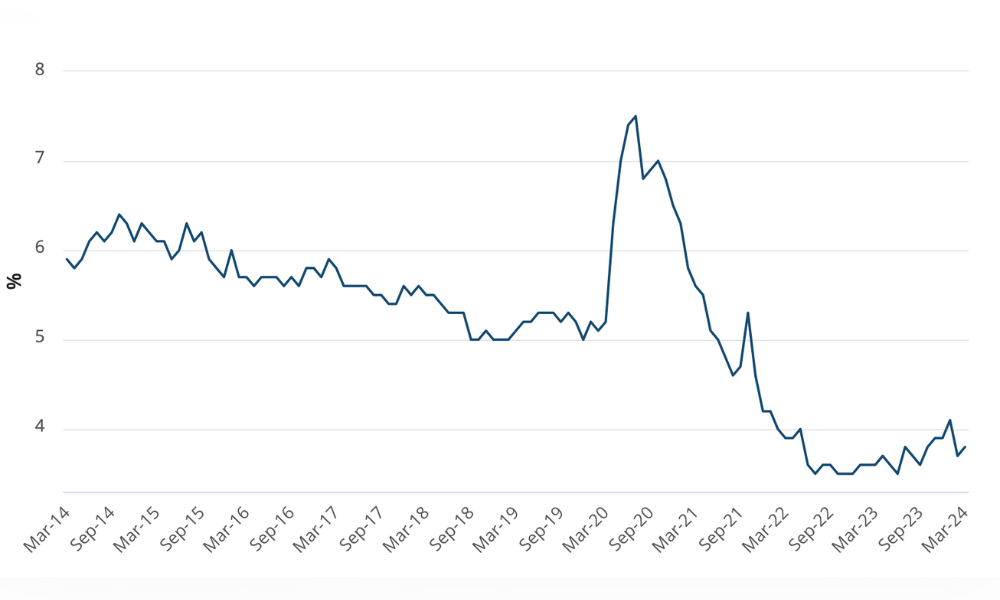
Labour market, however, 'relatively tight'

Australia's unemployment rate slightly went up to 3.8% in March, while the country's labour market remained "relatively tight."
Data released by the Australian Bureau of Statistics on Thursday showed the unemployment rate rose by 0.1 percentage point from 3.7% in February.
"With employment falling by around 7,000 people and the number of unemployed rising by 21,000 people, the unemployment rate rose to 3.8%," said Bjorn Jarvis, ABS head of labour statistics, in a statement.
The ABS attributed the employment drop to its return to "more usual pattern" after a larger-than-usual flow of people entered work in February.
By location, the Australian Capital Territory saw the lowest unemployment rate with 2.9%, while Queensland and Victoria both recorded 4.1%.
Seasonally adjusted employment-to-population ratio also fell to 64% and the participation rate decreased to 66.6%, according to the ABS.
"The labour market remained relatively tight in March, with an employment-to-population ratio and participation rate still close to their record highs in November 2023," Jarvis said.
"While they have both fallen by 0.4 percentage points since then, they continue to be much higher than their pre-pandemic levels."
But employers said there are signs that the labour market is stabilising, citing the rise of full-time employment to 9,853,800 people in March.
"Despite the decrease in employment overall, there was a notable lift in full-time employment, a sign that the labour market is becoming more stable," said Andrew McKellar, chief executive officer of the Australian Chamber of Commerce and Industry, in a statement.
But employers are still struggling to find the right people for their vacancies, according to the CEO, and are focusing their efforts on holding onto existing staff.
"Employers are responding to the labour and skill shortages by retaining workers where they can and offering more full-time employment to those with the right skills," McKellar said.